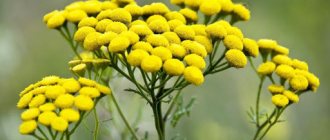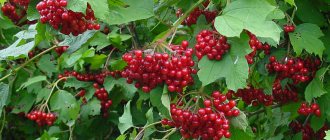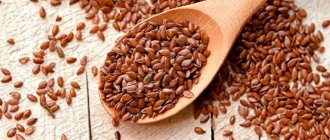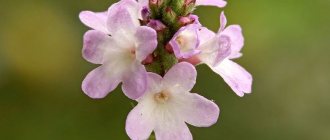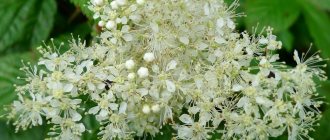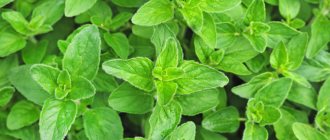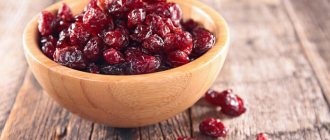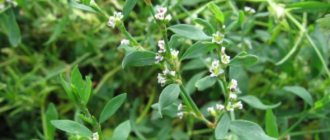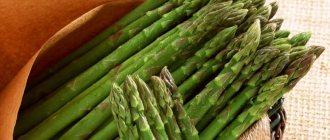Common yarrow is a herbaceous perennial from the Asteraceae family. The wide distribution and pronounced medicinal properties of yarrow are appreciated by herbalists and adherents of natural treatment.
This plant has such names as poreznik, whitehead, gulavitsa. A tenacious herb has taken root among military doctors, since in case of injury this plant can save lives. It also has a distinctive, recognizable smell - those who smelled the aroma of yarrow will never forget it.
Today, yarrow is used both in folk recipes and in official pharmacology. The beneficial properties and contraindications of yarrow have been well studied. Knowing them, some health problems can be solved without resorting to synthetic drugs, which is important if you are intolerant to the latter.
Interesting facts about yarrow
Ancient legends are associated with the culture, which eloquently demonstrate its properties. The Latin name of the plant Achillea is consonant with Achilles. This was the name of the famous hero of the Trojan War. According to legend, Achilles stopped bleeding with the help of yarrow. Dioscorides used “wound herbs” to heal open wounds and skin lesions. The famous Avicenna in his “Canons” also described the healing properties of the plant and the conditions for which it is indicated. The ancient Scythians and the loyal warriors of Alexander the Great used the plant to stop bleeding. Commander Suvorov, who took care of every soldier, went into battle only if the detachment was equipped with powder from the plant.
Peasants have long and still use yarrow herb to produce a decoction, the properties of which help destroy pests of agricultural plants, such as aphids and spider mites.
"Mille" in Latin means "thousand", and "folium" is a leaf. Those. The literal translation of yarrow is a thousand leaves. Upon examination, the leaves of this plant are dissected into many lobes.
The plant is officially recognized as medicinal not only in Russia. Yarrow is also used in Finland, Switzerland, Austria, Sweden, and the Netherlands for many diseases.
Morphological description
The plant has a branched horizontal rhizome. The stems are erect, slightly pubescent, reaching a height of 15 - 80 cm, branching only at the top. Yarrow leaves are alternate, lanceolate or linear, dissected into thin segments. The upper leaves sit on the stem, and the lower ones have petioles.
Small yarrow flowers are white or pink and are collected in compact inflorescences-baskets. The inflorescences form a common corymbose inflorescence at the tips of the shoots, which consists of a large number of baskets. In each basket, the middle flowers are tubular, bisexual, and the marginal flowers are ligulate, female.
The plant blooms during the summer, from June. The silvery fruits of yarrow ripen en masse in August-October. Pollination is carried out by insects - the crop is considered a good honey plant. Yarrow reproduces both by rhizomes and by seeds.
It grows mainly on the edges of forests, meadows, grows well in the steppes, along roads and along the edges of fields, on the banks of reservoirs, among bushes, in fallow lands and wastelands, in villages. Yarrow is widespread in Asia and Europe, found everywhere in all regions of the European part of Russia, in many regions of the Caucasus, and in Siberia.
Plant characteristics
What beneficial properties does yarrow have ? First, let's figure out what kind of plant this is. The erect stems of yarrow grow up to 80 cm in height. The dark green leaves are petiolate at the bottom and sessile at the top. The roots of the plant are creeping and quite thin. Small flowers are collected in large basket inflorescences. Yarrow blooms all summer until the first frost in the fall. The seeds ripen a month after flowering.
The drought-resistant and hardy plant prefers bright sunny meadows. It grows a lot along roadsides, in gardens and parks. Used as a medicinal, spicy and honey plant. Yarrow is well known to traditional healers. Traditional medicine also uses preparations from this plant.
Yarrow beneficial properties
Collection and preparation
The herb and inflorescences of yarrow have medicinal value. Grass and inflorescences are harvested from the beginning to the middle of flowering, i.e. from June to August. To do this, the tops of the stems are cut off at a distance of 15 cm from the top. The leaves are simply torn off from the thick part of the stem. When harvesting flowers, carefully cut the peduncles to a length of 4 cm.
The grass is dried under wide awnings, in the attic or veranda. If a dryer is used, the air temperature should not exceed 40-45 C. When drying, the raw materials must be turned over. Dry raw materials have a peculiar smell. The herb should be stored in dry and dark places in paper bags for 2 years.
Collecting yarrow growing in urban areas or near roads is prohibited. In unfavorable environmental conditions, yarrow easily accumulates toxic substances, and its grass is unsuitable for collection.
Beneficial features
The medicinal properties of yarrow are varied and are associated with the chemical composition of the plant, which includes many biologically active substances.
- Gelenic forms of the plant (obtained by extraction) have a pronounced antispasmodic effect on the smooth muscle tissue of the biliary and urinary tracts and intestines. This effect leads to dilation of the biliary tract and increased bile secretion into the duodenum, increased diuresis and relief of pain associated with intestinal spasms. These properties are associated with the presence of flavonoids and essential compounds in the plant.
- The bitter taste of Achilleain irritates the endings of the taste nerves, resulting in the activation of the secretion of gastric juice. The plant reduces bloating and fights flatulence.
- Among all known herbs, this plant has the best hemostatic properties: when applied locally and systemically, it quickly stops bleeding and does this without the formation of blood clots. The plant is indicated for any type of bleeding (except arterial) and at any age. Thrombophlebitis, heart attack and stroke are not strict restrictions on the use of yarrow, while other hemostatic drugs are dangerous to use for such diagnoses.
- The plant has anti-inflammatory, antiallergic and bactericidal properties thanks to essential oils, chamazulene and tannins.
- When applied topically, yarrow has an anti-burn effect.
- In moderate doses, hypotensive and sedative effects were observed.
Main indications for use
Since the beneficial properties and range of therapeutic effects of yarrow preparations are very wide, it is used for:
- various bleedings: external, uterine, hemorrhoidal, pulmonary, intestinal, gingival, nasal, etc. (except arterial);
- intestinal infections, acute and chronic: dysentery, diarrhea, colitis;
- peptic ulcer, cholecystitis, pancreatitis, hepatitis;
- pyelonephritis, glomerulonephritis, with cystitis;
- obesity;
- atherosclerosis;
- scratches, wounds, abrasions, eczema, diathesis, burns;
- inflammation of the gums, throat;
- acne, boils, fistulas;
- hair loss.
Folk recipes
Fresh Juice
Grind the fresh yarrow herb and squeeze the juice out of the pulp. The juice is bitter, before use it is mixed with natural honey. The average dose per reception is 1-1.5 tsp. Take three times a day.
- This is an ideal remedy for internal and external bleeding. Particularly effective for internal bleeding: nasal, gastrointestinal, uterine, pulmonary.
- Thirty drops of yarrow juice, diluted in equal proportions with mint juice and grape wine, help with cardiac arrhythmias.
- In addition, the juice is good for anemia.
- Another area of application for yarrow juice is to increase breast milk production: 1 tsp. 3 r/day.
- Used to prevent stone formation in the kidneys and gall bladder.
- Fresh juice of the plant helps with coughs, with tuberculosis, to improve appetite, with anemia, and for the treatment of liver diseases accompanied by jaundice.
Yarrow decoction
1 tsp pour 250 gr. boiled water, boil the broth for 5–10 minutes over low heat and strain. The average dose is 50 ml per dose/three times a day.
- Widely used to stop bleeding, internal and external. It is especially recommended for the treatment of women in labor after severe labor loss.
- It helps well with hemorrhoids, especially during exacerbation.
- The decoction has a pronounced diaphoretic and diuretic effect and is used for edema, as well as for hyperthermia.
- Helps treat chronic gastritis and gastrointestinal tract. Helps in the treatment of diarrhea, intestinal diseases, dyspepsia and nausea. Effective against helminthic infestation. In these cases, take half a glass three times a day.
- The drug is used for the treatment of inflammatory diseases of the urinary tract, kidneys, urolithiasis, as well as urinary incontinence (nighttime).
- Helps with inflammatory gynecological diseases, to regulate the cycle. Used to relieve pain during menstruation.
- The dosage form has a regulating effect on metabolism.
- This is an effective remedy for the treatment of dizziness, headache, hysteria, insomnia, and neuralgia.
Flower decoction
2 tbsp. Pour boiling water (0.5 l) over dried flowers and boil over low heat for no more than 10 minutes. Daily washing with the decoction helps in the treatment of acne.
Yarrow infusion
Pour boiling water (250 ml) into a thermos, place 2 tbsp. dry grass plants. Seal and leave the product for an hour, strain and squeeze the raw materials. Take the infusion half an hour before meals, 1/3 cup three times a day (store for no more than 2 days in the refrigerator).
- A good remedy for intestinal pain (disappears 15 minutes after administration). Recommended for normalizing stool after food poisoning.
- The infusion can also be used for hair treatment (rinsing).
- This infusion is suitable for gargling, lotions, and also for washing wounds.
Alcohol tincture
Take 4 tbsp. l. dry raw materials, grind thoroughly. Place everything in a jar and fill it with vodka (100 ml), put it in a cool and dark place for a week. Strain the medicine and squeeze out the raw materials well.
- Internal administration of 20 drops 3 times a day helps in the treatment of cholecystitis, hepatitis, pyelonephritis, glomerulonephritis and cystitis;
- When used externally, the tincture can be used to treat abrasions, acne (spot-on), and used to wash wounds.
Ointment
A handful of fresh leaves and flowers are crushed and thoroughly ground in a mortar, mixed in half with rendered lard. If fresh herb is not available, take one part of yarrow tincture and mix with four parts of Vaseline.
It is used fresh for bruises - for treatment, apply a thin layer of ointment to the skin.
Baths
A decoction of yarrow according to the recipe above, added to the bath in a volume of 1-2 liters, helps with scabies and lichen (scaly).
Tea
2 tbsp. leaves brewed in a liter of boiling water should be taken instead of tea to treat hemorrhoids.
Yarrow liquid extract
This is a pharmaceutical drug, which is not easy to obtain at home. Take 5-7 drops with water three times a day as a diuretic and choleretic, antiallergic, anti-inflammatory, hemostatic agent.
- Helps with pathologies of the liver and gall bladder, including dyskinesia, cholecystitis, gastritis and ulcers, urinary tract infections, helminthic infestations.
- Stops bleeding well.
- Tones the uterus, activates the secretion of gastric juice, increases blood clotting. Prescribed for neurasthenia and insomnia as a sedative. Used in nursing women to increase lactation.
Yarrow side effects, contraindications
Yarrow tea provides you with a number of benefits and is considered safe when taken in recommended dosages; However, you should be aware of situations where this tea may not be desirable for you.
Possible side effects
There are people who experience contact dermatitis when using fresh leaves. Therefore, if you begin to feel any form of skin irritation, it is best to stop contact with yarrow leaves.
There is also a possibility that you may experience drowsiness and increased urination while taking this tea. Therefore, it is necessary to consult a doctor and find out contraindications. Find out if this herb is safe for you.
Taking too much yarrow tea is contraindicated
Even if you don't experience any skin sensitivity at first, drinking too much tea over long periods can cause side effects. Which will lead to skin allergies or sensitivity to sunlight.
Drinking too much yarrow tea can also cause dizziness and headaches. Stop taking the tea immediately if you experience any of these symptoms, and if they do not subside, contact your doctor as soon as possible.
The herb is not considered toxic, although it does contain small amounts of thujone, a substance known to be harmful to the liver. This is why it is important to stick to the recommended dosages. Consult with a professional to determine the right amount of herbal tea for you.
When to Avoid This Tea
If you are pregnant, then drinking yarrow tea is unsafe due to existing contraindications. This herbal tea is known to stimulate the uterus and menstrual cycle, which can lead to fetal malformations or even dangerous miscarriage.
If you are breastfeeding, drinking this tea may not be a good idea as its chemicals can pass into breast milk and harm your baby. There is not enough research yet to be sure that this herb is safe for breastfeeding.
As your child gets older, you may be tempted to give him yarrow tea. It is not recommended to give it until the child is 5 years old. Even then, talk to your pediatrician. He will find a safe dosage according to your baby's size and needs.
Contraindications for the face if you have serious gastrointestinal ulcers. It is best to avoid this tea, as yarrow's stimulating effect on digestive juices can cause unnecessary pain and discomfort.
Yarrow belongs to the same family as ragweed, chrysanthemums, marigolds, and daisies. So if you are allergic to one of these herbs, there is a good chance that you may be allergic to yarrow. Be aware of contraindications and avoid herbal tea as it can cause a serious allergic reaction.
Yarrow contraindications for joint use
Yarrow is known to interact with blood thinners, lithium, stomach acid reducers, sedatives, blood pressure and epilepsy medications. Contraindications do exist as this tea may seriously increase or decrease the effectiveness of your medication. You should consult your doctor before drinking this herbal tea for medicinal purposes.
The use of decoctions and tinctures may increase the risk of bleeding. It is best to avoid it if you suffer from a bleeding disorder or are taking blood thinners. You should also stop taking this tea if you are 2 weeks away from surgery.
Herbal infusions with yarrow
The use of yarrow in combination with other herbs is an effective and common way to treat a wide range of diseases:
- Yarrow with chamomile (two thirds of yarrow flowers and one third of chamomile flowers) in the amount of 2 tbsp. pour half a liter of boiling water and steam. This steam is good to wash your face with acne (for treatment). Recommended for use as a wound healing agent, 100 ml 3 times a day. for any wounds.
- 2 tbsp. mixtures of yarrow and chamomile (equal parts), brewed in a glass of boiled water, help with pain and stomach cramps: 3-4 times a day, half a glass.
- Tea with yarrow and St. John's wort (1 tablespoon per 1000 ml of boiling water) is useful for cholecystitis and liver diseases.
- Yarrow with nettle leaf (1 tablespoon each) is poured into 0.5 liters of boiling water and left for 3 hours. This infusion is useful for painful periods: take 100 ml 4 times a day a week before menstruation and in the first days of discharge.
- Yarrow with celandine - good for inflammatory diseases of the kidneys and bladder. To obtain a decoction, mix dry herbs and 1 tbsp. The mixture is poured with half a liter of boiling water and boiled over low heat for 10 minutes. Take 2 tbsp. in 3-4 hours. In the case of oncopathology of the bladder or kidneys, it is recommended to add tenacious bedstraw, marsh cudweed and fireweed flowers, 1 tsp each, to these herbs. and take the decoction according to the indicated scheme - this will slow down the progression of the disease.
- Yarrow with mint - used for the treatment of gastritis, and also have an antispasmodic and anti-inflammatory effect, can be used for gastrointestinal spasms and inflammatory diseases. 1 tbsp. Brew the crushed components of the collection with half a liter of boiling water, leave for 30 minutes and take 100 ml 20-25 minutes before meals four times a day and always before bedtime.
- Yarrow with calendula helps in the fight against local ulcerative defects in the mucous membrane of the stomach and duodenum, and trophic disorders associated with ulcerative lesions. Effective for the treatment of infectious bacterial processes, and also helps to neutralize aggressive factors that cause gastritis and ulcerative disorders. To prepare a healthy infusion, 1 tbsp. a mixture of two herbs, pour 400 ml of boiling water, leave and take 50 ml three times a day before meals.
- Yarrow with plantain, chamomile and St. John's wort helps treat stomach and duodenal ulcers and stop bleeding. A medicinal infusion is prepared from a mixture of dry herbs in the amount of 1 tbsp. and half a liter of boiling water, leave for 60 minutes and take 50 ml on an empty stomach three times a day before meals.
- Yarrow with wormwood (1:4) is traditionally used to improve appetite. 1 tsp of the mixture in the specified ratio, brew 400 ml of boiling water, take a quarter glass three times a day.
Pharmacological forms of application
- yarrow tea Just like normal. 1 tbsp. a spoonful of dry herb is poured with 1 glass of boiling water, left for 20 minutes.
To brew tea, use all parts - simultaneously or separately. Tea should be consumed warm or cooled. It is preferable to make a fresh brew each time.
- the infusion in a thermos. For 300 ml of boiling water take 2 tablespoons of herbs. Then all this is infused for 2 hours, it is advisable to strain. Drink during the day.
- Decoction . Brew 2 tablespoons of dry extract in 0.5 liters of water and cook for 10 minutes over low heat. When the broth has cooled, it is filtered.
- The tincture is prepared from 5 tbsp. spoons of dry grass, they are filled with 100 ml of vodka. Then put in a dark place for 7 days. You should take 20 drops at a time.
- Yarrow ointment is made from Vaseline or any animal fat. Grass is added to the base. It is better to take a fresh plant that has been crushed beforehand. In winter, you can use the dried extract. If you add streptocide, the effect will be significantly enhanced.
- Yarrow juice also brings many benefits; it should be squeezed through cheesecloth from the grass crushed into a pulp.
Contraindications and special instructions for use
All medicinal forms of the plant have some toxic effect, so internal consumption requires caution. In particular, you should not exceed the recommended dosage, nor should you use yarrow for a long time.
Yarrow should not be used:
- children under 6 years old;
- pregnant women;
- individual intolerance;
- severe hypotension.
Despite the absence of direct contraindications, yarrow preparations are prescribed with caution if there is a tendency to form blood clots. The plant should not be used if there is increased secretion of the gastric glands.
In a number of patients, long-term therapy with yarrow-based drugs leads to side effects such as dizziness and skin rash. If any unusual phenomena or reactions to yarrow occur, treatment should be discontinued.
Author:
Sabuk Tatyana Leonidovna hygienist, epidemiologist
Benefits for women
It is mandatory to obtain a doctor’s permission to include yarrow-based medicinal forms in medical therapy.
Proper use of this medicinal plant is beneficial for women with the following pathological disorders of the body:
- Uterine bleeding. Grind fresh herbs and squeeze out the juice. Take 40 drops three times a day.
- Inflammatory pathologies of the uterus. Prepare an infusion by soaking 1 tbsp for an hour. l. chopped aerial parts in 300 ml of boiling water. After breakfast, lunch, and dinner, drink a third of a glass of filtered infusion.
- Irregular menstruation. Take dried grass and grind it. Dial 1 tbsp. l. raw materials are placed in a ceramic bowl. Pour in a glass of boiling water. After an hour, filter the infusion and drink 1 tbsp before meals at intervals of 6 hours. l.
- Stimulation of lactation. Pour 1.5 tbsp into an enamel pan. l. dry yarrow, having previously crushed the grass. Add 250 ml of water. Boil for 15 minutes. Cover the container with a napkin and leave for an hour. After filtration, add cooled boiling water to the original volume.
